Home | Saltwater Flies | Fly Tying Materials | Saltwater Fly Fishing Accessories
Ordering Instructions, Shipping rates, Your Satisfaction Guaranteed | Site Map
Tying the Cockroach - Tarpon Fly Instructions
| Back to steps 1 to 5... |
Tying the Cockroach (Steps 6 to 11) |
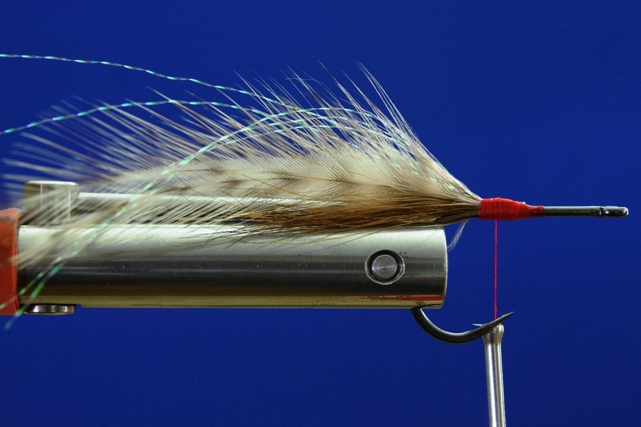
| Step 6: Attach four to six strands of Krystal Flash (color "Gray Ghost" or a similar product, such as pearl Polarflash. Trim to the same length of the tail feathers. |
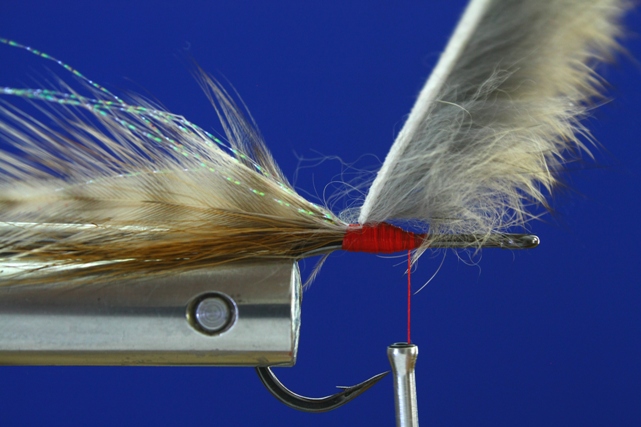
| Step 7: Tie in a strip of natural gray or "grizzly" colored rabbit fur. Leave a space equal to the width of the fur strip between the thread wraps securing the fur strip and the tail feathers. Securing the fur strip too far back can cause the first turn of the strip to twist the tails - leaving the space will allow the first turn of the fur strip to lay just in front of the tails without twisting them. If possible, select a thin strip of bunny fur, as this will be easier to control and less bulky. If the fur strip you have on hand has thick skin, you can usually stretch it gently to thin the skin down somewhat. |
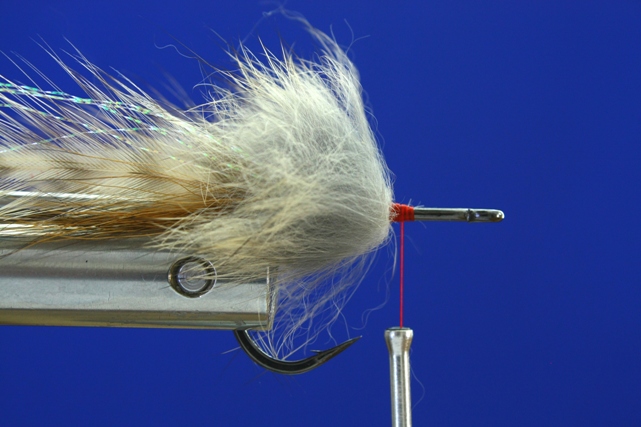
| Step 8: Palmer the bunny strip toward the front of the hook. As you make the wraps, use plenty of tension and brush the fur toward the rear of the hook with your finger tips or even a small comb. After making three to four wraps, the fur should form a thick collar with about one third of the bare hook shank in front. |
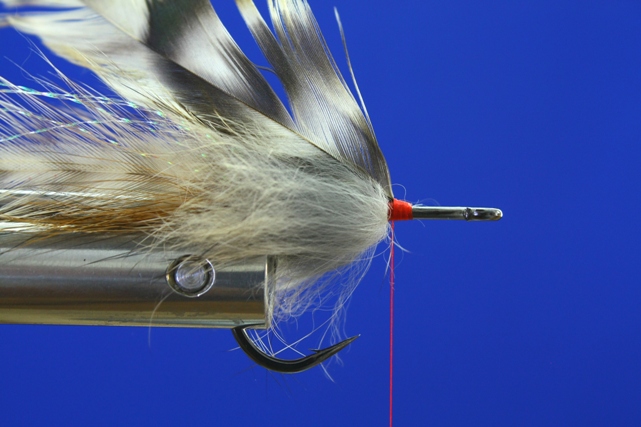
| Step 9: Attach a large grizzly hackle. Unlike the tail feathers, this should be a wide, soft, webby hackle - "Schlappen" works nicely for this sort of collar. |
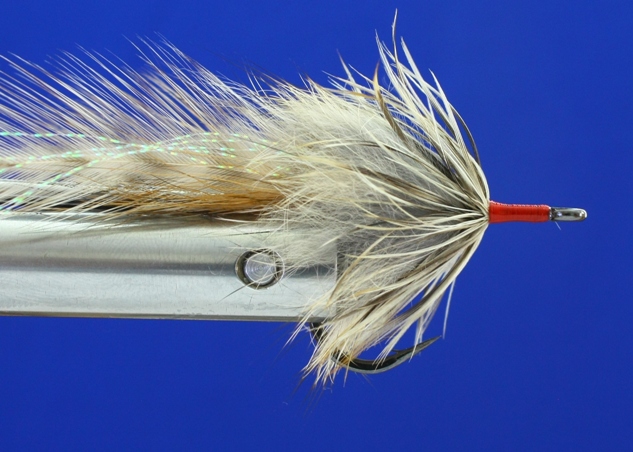
| Step 10: Wrap the hackle feather three to six times in front of the bunny fur collar, sweeping the hackles toward the rear of the hook. Coat the remaining bare hook shank with nesting thread turns, and tie off using a whip finish. |
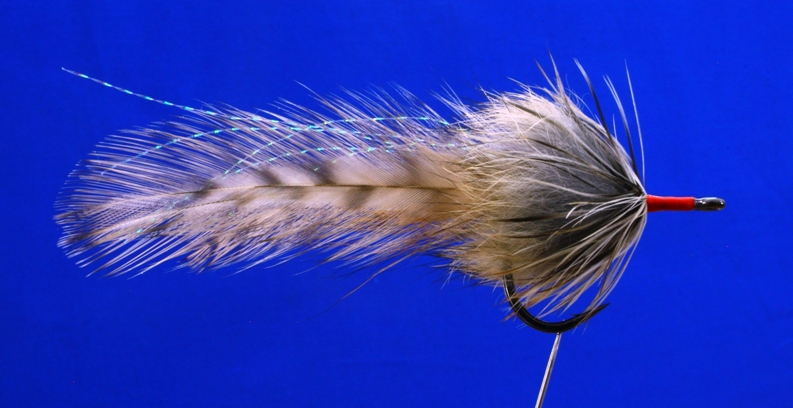
| Step 11 - The Finished Fly: Coat the fly head several times with a clear glossy head cement (Loon Hard Head or similar) or once with epoxy. Some tiers prefer to leave the first half of the hook shank bare; however both styles will still allow for the fly to be attached to the leader with a snell, which remains a popular method of securing the fly to the leader. |
| The Cockroach can also be tied in other colors. Some popular alternatives use purple or red tail feathers with a black bunny fur collar; and a fly tied in an orange color scheme is also very good. Variations in the materials used include using a rabbit fur strip for the tail, and many classic dressings for this fly call for natural brown bucktail or gray squirrel tail to be used for the collar instead of the rabbit fur - such a style can be harder to tie, but will give a slimmer profile to the fly if that is needed. With a trend towards smaller flies, epecially for tarpon in hard-fished areas, tying a few of these in a smaller #1/0 size is also a pretty good idea. |
| To wrap things up, let me suggest that practice (and some patience) is key to tying this style of fly well. It may be challenging to perfect the techniques used in making this fly on the first try, but a few repetitions will have you spinning your own solid versions pretty quickly, and with a little luck, you may experience the incredible magic of seeing a very big fish eat this classic tarpon fly, and feeling the line come tight. |
| - Blake Davis |
| Back to steps 1 to 5... |